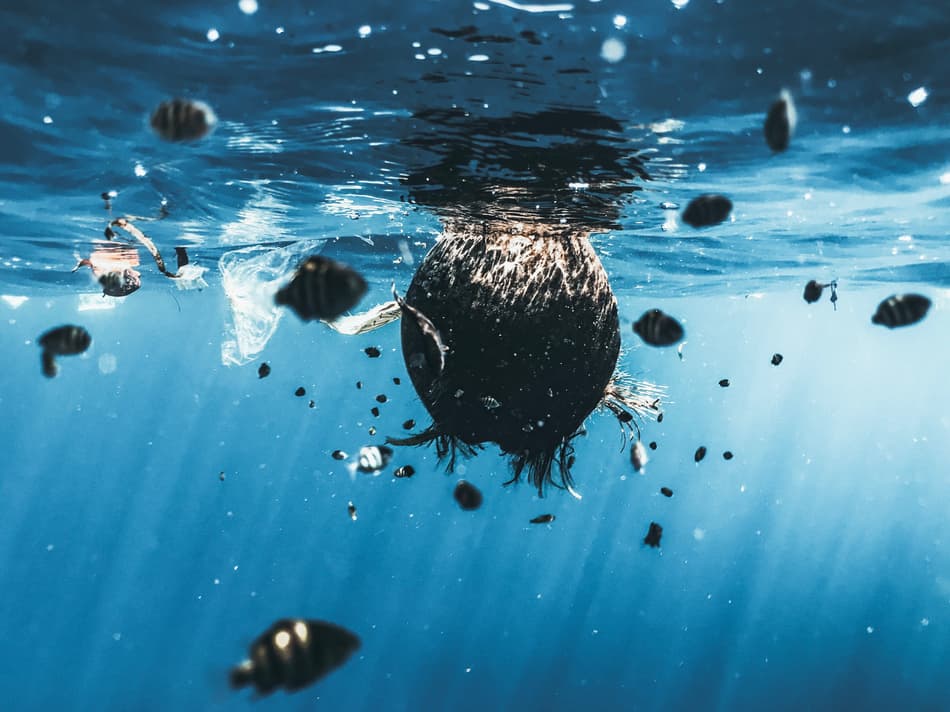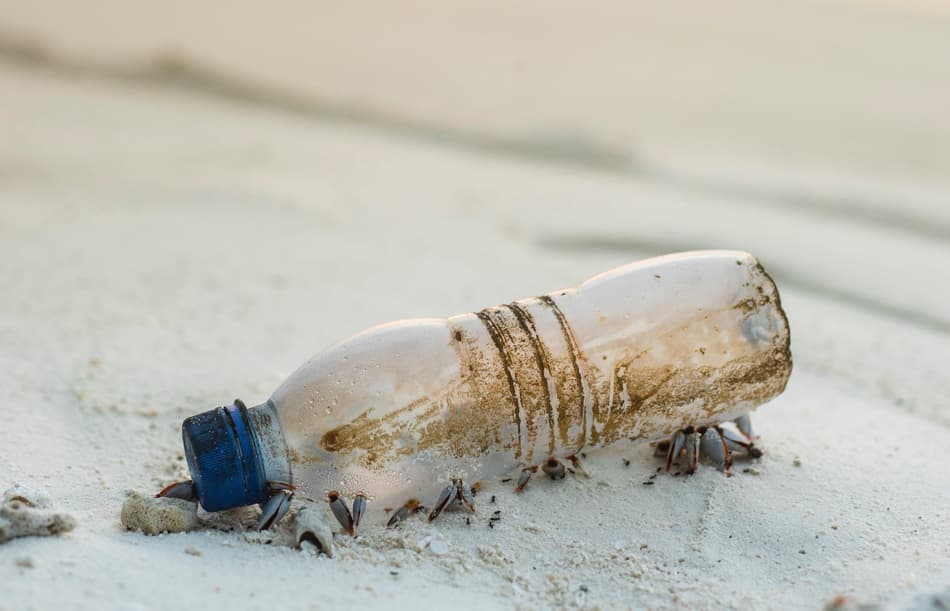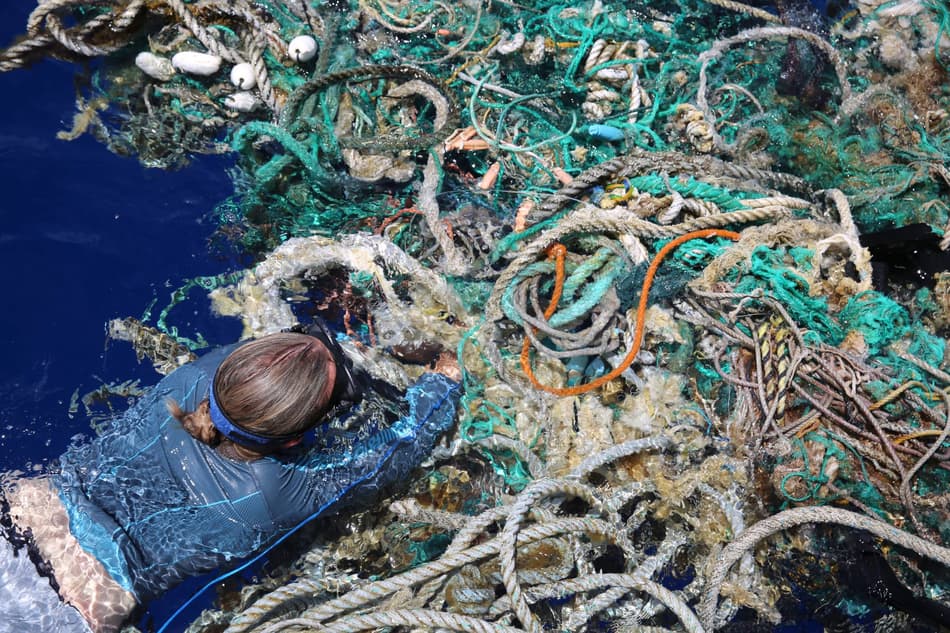How marine debris transports species to foreign shores
Marine debris is one of the largest ecological challenges facing the world today and poses a grave threat to underwater and coastal ecosystems, as well as to human health. Finding its way to rivers, beaches, and the ocean, this man-made mess is typically the result of sewage flows, stormwater, or strong winds dragging materials away from land, as well as through deliberate littering. From soda cans to bicycles, discarded fishing nets to whole boats, marine debris is often made of materials that degrade slowly over time. In fact, more than 80% of all marine debris is made of plastic.

The damage done to coastal and ocean ecosystems by marine debris is vast, with the harm to ocean life particularly devastating. Plastic in the oceans, however, affects much more than the eye can see, accumulating toxic chemicals up the food chain and impacting the reproductive capacity of animals. One phenomenon that has received less attention is the movement of coastal creatures into non-native habitats as a result of clinging to man-made debris as it moves around in the open water of the oceans.
Rafting around on marine debris
This oceanic dispersal, or “rafting”, of species from one habitat to another has been a known consequence of natural events, such as storms and strong currents, for many years. Though “rafts” composed of natural materials typically break up before they reach distant shores, some well-known examples exist that show what can happen when they don’t. The green iguana, for instance, arrived on the Caribbean island of Anguilla floating on tree debris after a hurricane in 1995, quickly colonizing the island and threatening the local iguana population. When species, such as the green iguana, arrive in habitats where they do not belong and cause damage to local ecosystems, they are considered to be invasive.
In 2012, researchers observed a unique example of rafting in action. More than a year after the Tōhoku earthquake and tsunami in Japan, a dock that had broken loose from the Japanese port of Misawa washed up on Oregon’s Agate Beach in the US. It had traveled over 5000 miles across the Pacific Ocean to get there. In a later interview about the incident, John Chapman, adjunct professor at Oregon State University’s Hatfield Marine Sciences Center, explained that he couldn’t believe his eyes when he saw that the dock was still covered by Asian species, such as the Northern Pacific seastar and the Japanese shore crab. It had been thought “impossible” for such creatures to survive an oceanic crossing in this way, but Chapman admits, “we were so wrong”.

Persistent plastic in the mix
Following an investigation of the incident, Researchers at the Smithsonian Environmental Research Center’s Marine Invasions Lab suggested that much of the debris that had arrived with the dock – mostly plastic items from fisheries, including ropes, oyster spacers, eel traps, and crates – had already been floating off the Japanese coast. It was the enormous energy of the tsunami that sent them on their way across the ocean. The event proved to be a significant eye-opener for scientists investigating the role of marine debris in transporting organisms between habitats, with over 300 non-native species washing up alive and well across North America and Hawaii.“A tree or a branch or even a wooden ship would disintegrate and fall apart before a significant amount of it could cross the ocean, but now the plastic, fiberglass, concrete and steel objects that we make — they don’t disappear. They carry these [species] across,” said Professor Chapman.
The tsunami had shown that species could survive for years aboard floating debris, particularly plastic. Chapman is unsure about what this means for the world’s coastal ecosystems. “We don’t know what this is going to do, which is the worst thing of all perhaps, we just know that every place is connected with every other single place on the planet, and it’s [through] plastic trash.”
Plastic trash includes so-called “ghost nets”, lost or discarded nylon nets from fishing that are well known to entangle dolphins and turtles (among other species). Nylon is plastic and does not decompose, so the ghost nets continue to float and catch marine creatures for many years. There are an estimated 640,000 tons of abandoned nets across the world’s oceans, comprising up to 10% of all marine litter.
One such ghost net was encountered by the TOMRA-supported eXXpedition, a series of sailing voyages investigating the impacts of plastic on the world’s oceans. As eXXpedition co-founder and director, Emily Penn, explained, “What we find is that the algae comes along, and then the little fish come along to eat the algae, and that attracts the bigger fish, and then the even bigger fish, and you have the sharks coming along as well. It’s actually quite common that we see entire ecosystems hanging off the bottom of these bits of debris like a coral reef. But then they move, thousands of miles across an ocean to a place that they don’t belong.”

Research into the rafting of species on marine debris remains in its early phases, and there is still plenty to be done to establish the true impact of this phenomenon. It’s clear, however, that the growth of plastic and other human-made materials in our oceans offer greater opportunities for creatures to hitchhike from one place to another. As scientists work to gain greater insight into the trajectories of litter in the oceans, the abilities of organisms to survive and procreate upon plastic, and its patterns of decomposition, turning off the tap of the plastic pollution problem may be the most effective remedy at our disposal.
Making plastic pollution a thing of the past
Though there is no single answer to the problem of plastic reaching our oceans, collaboration between policymakers, producers and consumers will be required. With legislative pushes and consistent consumer pull, pressure continues to mount for good solutions to be implemented.
Kristine Berg, Sustainability Manager at TOMRA says: “We need to create systems where nothing goes to waste, where the idea of ‘trash’ is eliminated completely, and where every resource has a purpose. Once a product has finished its objective in one lifecycle, it can be given new life as a new product to fulfill that purpose, again and again.”
Every year, TOMRA’s globally distributed network of reverse vending machines collects over 40 billion beverage containers for closed-loop (bottle-to-bottle) recycling. Even so, this represents just 3% of all beverage packaging sold annually, worldwide. To meet future demand for recycled packaging and divert plastic litter from the environment at the same time, much more needs to be done.
“By providing incentives to recycle, designing products with reuse in mind, working with policymakers to ensure producer responsibility is taken, and spreading awareness of the issue, we can make sure that the Earth’s resources are protected, moving from a take-make-waste model towards a circular system,” Berg concluded.
The migration of invasive species across the oceans on rafts of plastic is yet one more incentive to capture plastic litter before it falls out of our closed resource systems.
